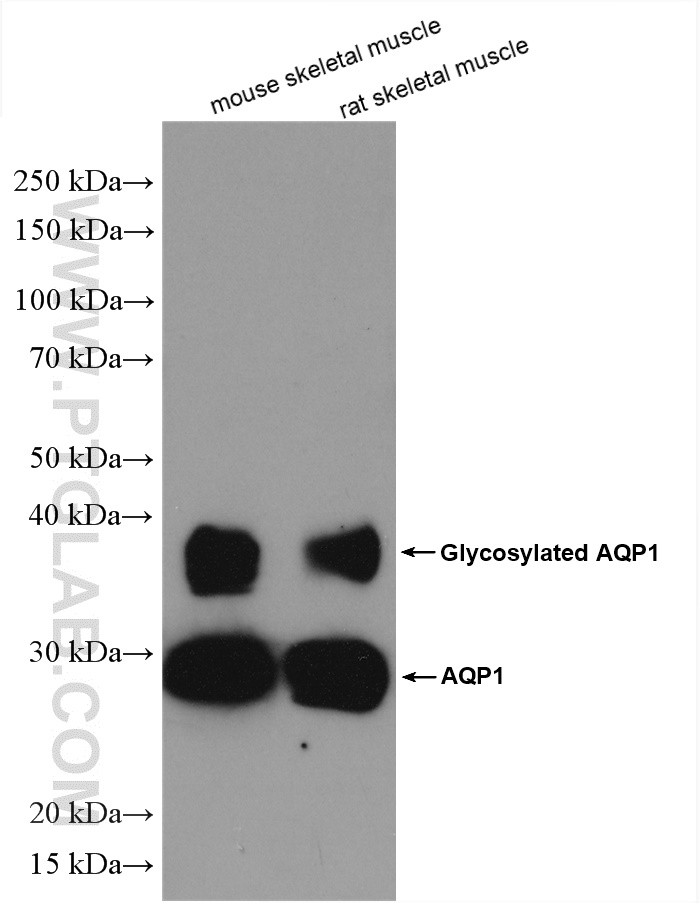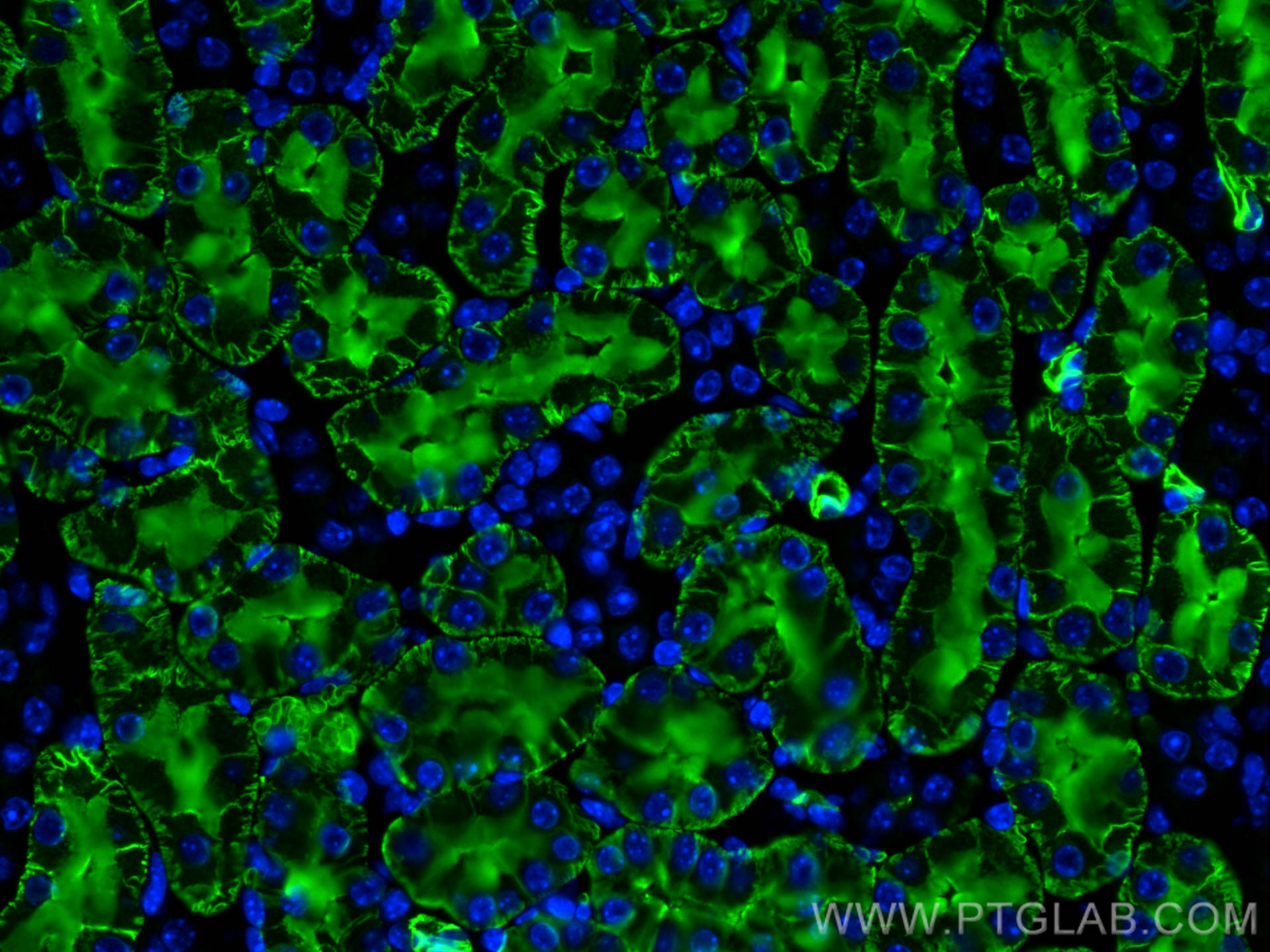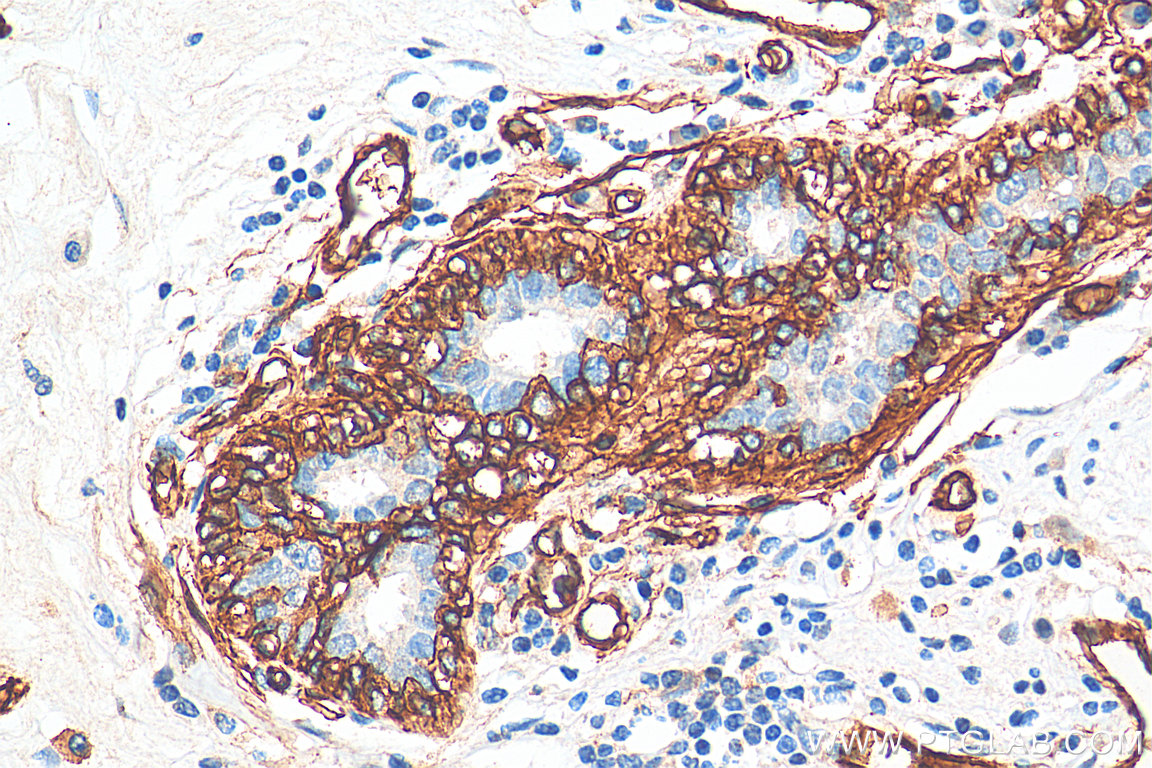验证数据展示
经过测试的应用
| Positive WB detected in | mouse skeletal muscle tissue, human heart tissue, rat skeletal muscle, mouse kidney, rat kidney |
| Positive IP detected in | mouse kidney tissue, mouse skeletal muscle tissue |
| Positive IHC detected in | mouse kidney tissue, human breast cancer tissue, human kidney tissue Note: suggested antigen retrieval with TE buffer pH 9.0; (*) Alternatively, antigen retrieval may be performed with citrate buffer pH 6.0 |
| Positive IF-P detected in | human breast cancer tissue, mouse kidney tissue |
推荐稀释比
| 应用 | 推荐稀释比 |
|---|---|
| Western Blot (WB) | WB : 1:5000-1:50000 |
| Immunoprecipitation (IP) | IP : 0.5-4.0 ug for 1.0-3.0 mg of total protein lysate |
| Immunohistochemistry (IHC) | IHC : 1:3000-1:12000 |
| Immunofluorescence (IF)-P | IF-P : 1:50-1:500 |
| It is recommended that this reagent should be titrated in each testing system to obtain optimal results. | |
| Sample-dependent, Check data in validation data gallery. | |
产品信息
20333-1-AP targets AQP1 in WB, IHC, IF-P, IP, ELISA applications and shows reactivity with human, mouse, rat samples.
| 经测试应用 | WB, IHC, IF-P, IP, ELISA Application Description |
| 文献引用应用 | WB, IHC, IF, IP |
| 经测试反应性 | human, mouse, rat |
| 文献引用反应性 | human, mouse, rat, pig, canine, bovine, goat, horse, cat |
| 免疫原 | AQP1 fusion protein Ag14093 种属同源性预测 |
| 宿主/亚型 | Rabbit / IgG |
| 抗体类别 | Polyclonal |
| 产品类型 | Antibody |
| 全称 | aquaporin 1 (Colton blood group) |
| 别名 | Aquaporin 1, Aquaporin-CHIP, Aquaporin-1, Aquaporin1, AQP-1 |
| 计算分子量 | 269 aa, 29 kDa |
| 观测分子量 | 25-28 kDa, 35-50 kDa |
| GenBank蛋白编号 | BC022486 |
| 基因名称 | AQP1 |
| Gene ID (NCBI) | 358 |
| RRID | AB_10666159 |
| 偶联类型 | Unconjugated |
| 形式 | Liquid |
| 纯化方式 | Antigen affinity purification |
| UNIPROT ID | P29972 |
| 储存缓冲液 | PBS with 0.02% sodium azide and 50% glycerol , pH 7.3 |
| 储存条件 | Store at -20°C. Stable for one year after shipment. Aliquoting is unnecessary for -20oC storage. |
背景介绍
AQP1 is a member of aquaporins (AQPs) that are small membrane-spanning proteins facilitating water transport. AQP1 is expressed in most tissues in the mammalian body. Alterations of AQP1 expression have been linked to variety of diseases, including cancer. The predicted molecular weight of AQP1 is around 28 kDa, while highly glycosylated form can also be observed around 35-50 kDa. (PMID:20965731,16508653, 1530176).
实验方案
| Product Specific Protocols | |
|---|---|
| WB protocol for AQP1 antibody 20333-1-AP | Download protocol |
| IHC protocol for AQP1 antibody 20333-1-AP | Download protocol |
| IF protocol for AQP1 antibody 20333-1-AP | Download protocol |
| IP protocol for AQP1 antibody 20333-1-AP | Download protocol |
| Standard Protocols | |
|---|---|
| Click here to view our Standard Protocols |
发表文章
| Species | Application | Title |
|---|---|---|
J Extracell Vesicles Quantification of urinary podocyte-derived migrasomes for the diagnosis of kidney disease | ||
Theranostics Histone H3K27 methyltransferase EZH2 regulates apoptotic and inflammatory responses in sepsis-induced AKI | ||
Proc Natl Acad Sci U S A Direct visualization of the arterial wall water permeability barrier using CARS microscopy. | ||
Cell Rep ESCRT-I protein UBAP1 controls ventricular expansion and cortical neurogenesis via modulating adherens junctions of radial glial cells |












